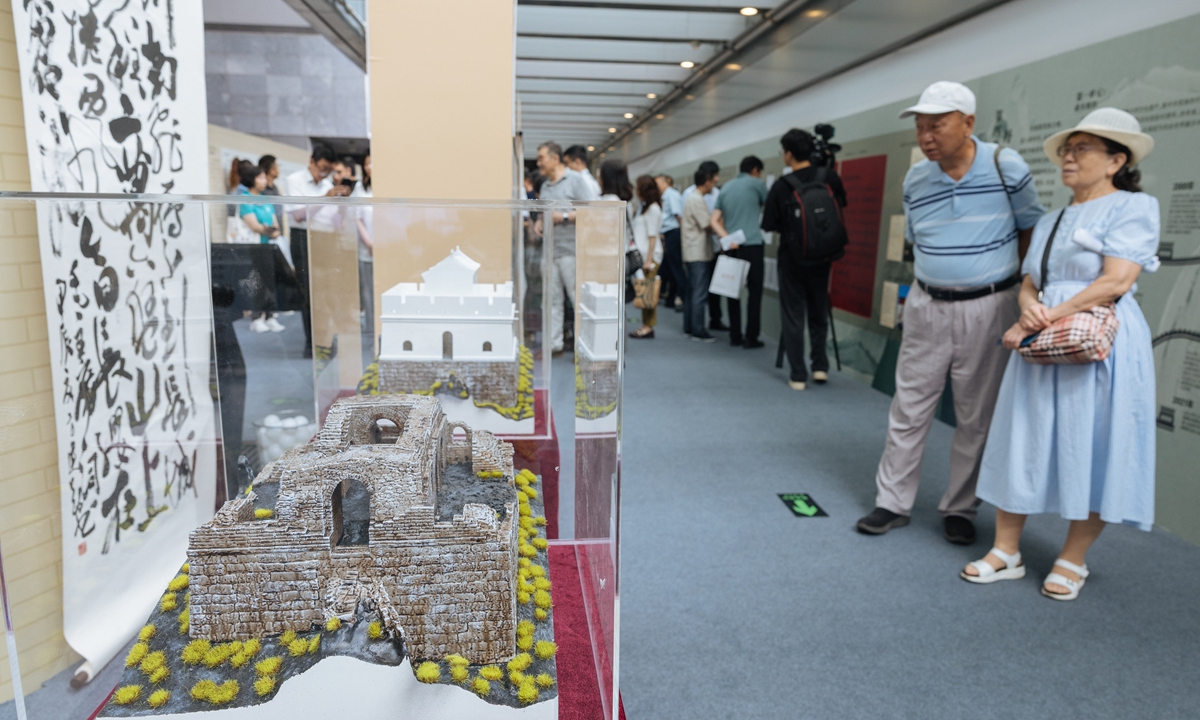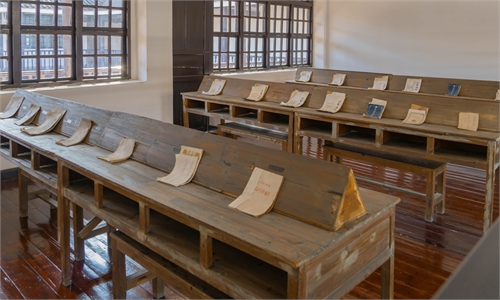
Visitors explore an exhibition highlighting the contributions of social organizations and individuals in protecting the Great Wall at the Capital Museum in Beijing on July 5, 2024. Photo: Li Hao/GT
Featuring a total of 150 relics, photos and documents, the Capital Museum in Beijing is now hosting a cultural exhibition dedicated to Great Wall culture.
Unlike exhibitions that focus on the Great Wall's landscape and history, the current show tells stories about ordinary people and social groups safeguarding the world's longest man-made structure.
Items on display include bricks collected from the Great Wall and archived catalogs of people's donations dating back to the 1980s.
The exhibition was inspired by a campaign launched in 1984. It was initiated by a journalist called Su Wenyang in Beijing. With the theme of "Love China, Restoring the Great Wall," the campaign encourages social sponsorships such as artist charity performances, individual donations and enterprise fundraising to support the Great Wall's restoration.
Taking the Badaling section of the Great Wall in Beijing's Yanqing district as an example, between the year of 1984 to 1994, it received more than 60 million yuan ($8.2 million) in donations from 100,000 organizations and groups. Donations from individuals reached half a million yuan.
These donations helped repair a 4,000-meter section of the heritage site. Also, in Beijing's Huairou district, a 1,800-meter section of the Mutianyu Great Wall was also restored through the funding.
"Social sponsorship of the Great Wall often comes from companies, families, scholars and educational organizations," Lou Kaihui, a scholar of Great Wall culture, told the Global Times.
He emphasized that the Great Wall has attracted not only domestic donations but also donations from overseas.
A display board at the exhibition shows that UNESCO donated 1 million Swiss francs ($1.1 million) to protect the Great Wall through a program that focuses on safeguarding Venice in Italy and the Great Wall in China. Including the international body, Great Wall conservation has received support from 26 countries, including Greece, Germany and also the US.
"I'm very touched to see foreign countries' contributions to the Great Wall. I want my daughter to know that the Great Wall is the entire world's legacy," Dong Lijuan, a 43-year-old visitor on site, told the Global Times.
While noting that 40 years of collective efforts "have given the Great Wall a new life," Li Dan, a representative from the Administration Office of the Badaling Great Wall, told the Global Times that the participation of ordinary individuals is as important as financial aid.
"We now have teams that include 134 local villagers who volunteered to take shifts to inspect the Badaling Great Wall. Their efforts will be repaid through subsidies given by local authorities," Li remarked.
Modern exhibits like Great Wall themed 3D painted sculptures and interactive multimedia displays are installed in the final section of the exhibition. These aim to showcase how "technology and the Great Wall" has become a new strategy for the heritage's future conservation.
Supported by Chinese tech giants such as DJi, a total of 18 patrol routes for unmanned aerial vehicles have already been deployed along the Badaling section, Li told the Global Times. Assisted by Tencent, on site digitalization projects are being carried out to restore the full image of the Jiankou section of the Great Wall in Huairou district.
"Nowadays, technological innovation helps the Great Wall have amplified value in sectors like relic conservation and cultural tourism," Li noted.
The exhibition is scheduled to end on August 31.



